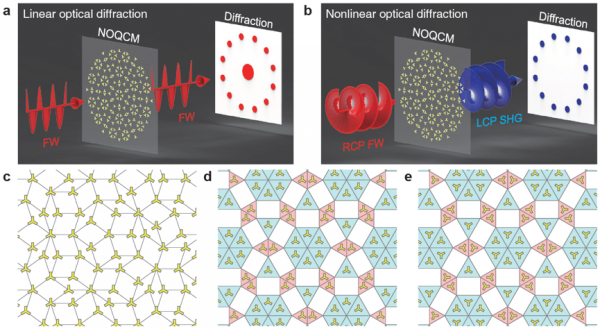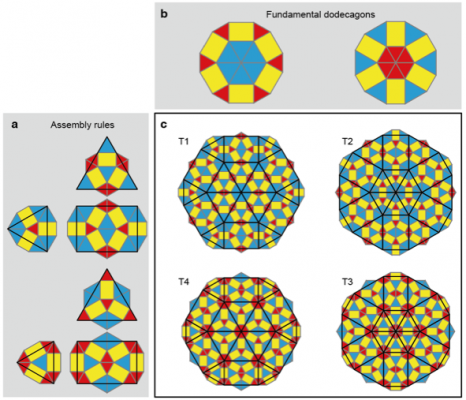In the majority of solid matter are crystals: atoms are organized in an ordered pattern. Physicists long believed that the structures of all crystals consisted of patterns that repeated over and over again.
In 1982, Israeli scientist Dr. Dan Shechtman was studying what are now known as diffraction patterns, which occur when x-rays are passed through the crystals. He discovered a regular diffraction pattern that did not match any periodically repeated structure, and these crystal structures were later named quasicrystals. Through Shechtman’s discovery, several other groups were able to form similar quasicrystals, finding these materials to have low thermal and electrical conductivity, while possessing high structural stability. The discovery of quasicrystals with macroscopic symmetry set off a revolution in crystallography, changed the definition of crystals, and new research fields were born and widely used. Dr. Shechtman was awarded the 2011 Nobel Prize in Chemistry. .
Recently, a team led by Dr. Li Guixin (associate professor) from the Southern University of Science and Technology (SUSTech),Shenzhen Institute for Quantum Science and Engineering (IQSE) and the Department of Material Science and Engineering (MSE) has successfully demonstrated that the nonlinear second harmonic generation (SHG) in the far field can be manipulated by both the local and global symmetries of metasurface crystals. The result was published in the journal of Advanced Materials titled “Quasicrystal Photonic Metasurfaces for Radiation Controlling of Second Harmonic Generation.”

In the field of materials science, the nature of matter is often related to its microscopic composition. The many excellent characteristics of quasicrystals are related to the arrangement of their components and atomic quasi-periods.
The photonic metasurfaces studied by Dr. Li Guixin’s research group is based on a micro-nano structure with a scale much smaller than the operating wavelength. It uses optical processes such as plasmon resonanceto realize some unnatural optical properties even the component materials are still conventional materials.
The advantages of the 2D artificially engineered surfaces are most prominent, as they have enabled abundant optical functionalities and hold great commercial potential in integrated optics thanks to their compactness and design flexibility.
The 2D metasurface overcomes the loss and processing problems of 3D metamaterials, hence becoming an emerging research hot spot. It also provides a unique idea for the design of new optical metamaterials.
The metasurface could be divided into metal, semiconductor, dielectric and composite materials. There are active and passive functions, as well as linear and nonlinear optical processes. Previous studies have concluded that the local symmetry of metasurface elements tends to affect its optical properties, but there are few studies on the global symmetry effects of structural unit arrangement, especially in nonlinear optical metasurface.
In this research, Dr. Li and his team have designed and fabricated nonlinear optical quasicrystal metasurfaces by assembling the geometric phase controlled plasmonic meta-atoms into the macroscopic quasicrystal lattices.

From the systematic study of optical behaviors of the quasicrystal metasurfaces, the research team successfully demonstrated that the nonlinear SHG radiation can be manipulated by both local and global symmetries of the metasurface crystals. The theoretical model was developed for interpreting the behaviors of far-field nonlinear optical radiations. That model also enabled the team to predict the functionalities of other quasicrystal metasurfaces.
The concept of quasicrystal metasurfaces represents a unique strategy for controlling far-field nonlinear optical radiations. It also offers an integrated platform for other areas such as quantum information processing, optical modulation, and all-optical optical switching.
Mr. Tang Yutao, from SUSTech-Hong Kong Baptist University Joint program and Dr. Deng Junhong of the Department of MSE at SUSTech contributed equally to this work. Dr. Li Guixin is the corresponding author and Dr. Wu Zihui, an assistant professor from Hong Kong Baptist University, participated in the research.
This research was supported by the Guangdong Provincial Innovation and Entrepreneurship Project, Applied Science and Technology Project of Guangdong Science and Technology Department, National Natural Science Foundation of China, and Natural Science Foundation of Shenzhen Municipal Science and Technology Innovation Commission.
Original article: https://doi.org/10.1002/adma.201901188






